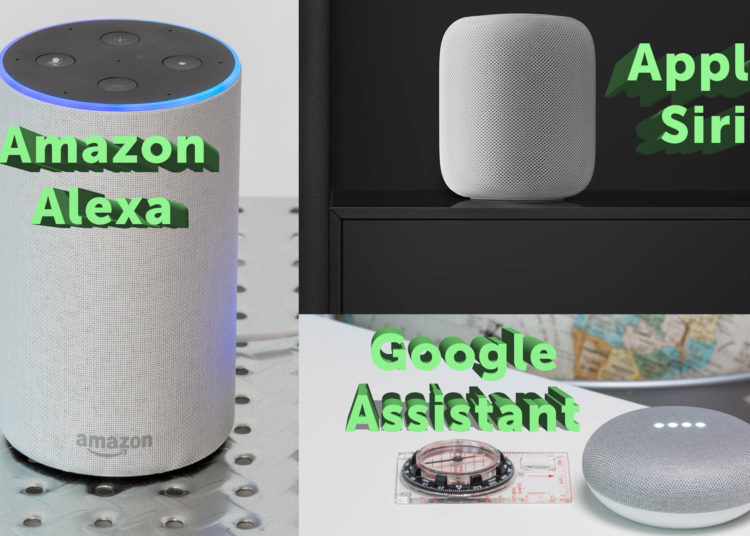If you plan to turn your house into a smart home, choosing a digital voice assistant is one of the first steps. On the surface, it seems like a simple decision—pick the one you’re familiar with. But the choice of a home assistant shapes the ecosystem of your smart home.
While many smart devices work with multiple hubs, you’re more likely to gravitate toward a smart home platform that offers close compatibility with your existing home automation devices. Let’s consider the major players in the digital assistant market, the ecosystems they support, and the pros and cons of each to control your smart home.
Things to Consider Before Choosing a Digital Assistant

Before choosing anything for your smart home, think about compatibility. Evaluate any home automation devices you already own and which hubs integrate with them. There are three major smart home platforms that currently dominate the market—Google Nest (formerly Google Home) with Google Assistant, Amazon Echo with Alexa, and Apple HomeKit with Siri. Most existing home automation devices connect with at least one of these smart home approaches.
If you intend to integrate multiple devices, such as security or lighting, you’ll want to make sure your internet and router are up to the task. Consider setting up a separate network to protect home automation devices from hackers. In the case you live in a rural area where bandwidth is an issue, explore options like satellite internet to bolster your speed and ensure the connectivity your smart home requires.
Once you’ve got your internet prepped, you’re ready to start looking for the brains of your operation.
[1] Amazon Alexa Gives You the Most Compatibility

When you need broad compatibility with multiple devices, Alexa is your best bet. Alexa is Amazon’s virtual assistant powered by AI, and it comes preloaded on devices like the Amazon Echo—the smart speaker that spearheaded broad adaption of voice assistants.
Amazon also boasts one of the cheaper ways to get into smart home control with the compact Echo Dot. However, you should be aware that, like always, you get what you pay for. Those cheaper speakers can be lackluster, and Alexa has a more difficult time discerning voice recognition. Better options for Alexa can be smart displays, such as the Echo Show 5.
Alexa’s impressive library of over 80,000 skills, including third-party capabilities, makes it the most versatile of the virtual assistants. From lighting control and the weather to integrating thermostats and controlling streaming sticks, Alexa stays busy. It does have some shortcomings though, such as clunky smartphone integration and difficulties playing nice with things in Google’s repertoire, such as YouTube.
Costs
- Alexa app on iOS and Android: Free
Pick a Smart Speaker or Display
[2] Google Assistant Has the Smarts

Saying Google’s digital assistant is the brainchild of the smart home family is probably an understatement. The Google Nest ecosystem runs on Android and iOS, but the Google Assistant is powered by the behemoth that is Google search. This puts the internet at your fingertips and makes Google Assistant adept at more complex requests.
While Google Assistant can be used on smartphones, smart speakers such as the Google Nest Mini also have an attractive entry cost to match Amazon’s prices for the comparable Echo. The Google Nest Hub, a smart display with Google Assistant integrated, is also a well-built choice here.
As you might expect from a Silicon Valley giant, Google’s advanced technology and focus on AI also makes it a superior digital assistant when it comes to voice recognition. Google Assistant offers multiple languages, and its dynamic multiuser functionality allows it to recognize up to six different voices tied to different accounts.
If you use the Google suite of products online, you’re in luck because your home hub is going to integrate seamlessly, allowing you to call up Google calendar, add appointments, get driving directions, and more.
Google’s Achilles heel is its less extensive compatibility. While it does work with a select group of third-party devices, including Nest products, the menu of home automation choices is less robust than Alexa’s.
Costs
- Google Assistant and Google Home app on iOS and Android: Free
Pick a Smart Speaker or Display
[3] Siri Is for Apple Fans

Google and Amazon dominate the smart home assistant market, but there is a third option, and it’s one you should already know—Siri. Because Siri is exclusive to Apple products, you’ll find fewer choices for compatible home automation. But if you’re already a fan of the Apple brand (and hardware), you may find an unparalleled user experience in the way Apple’s platform integrates with the Apple HomeKit ecosystem and the Apple Home app.
Siri is, of course, the voice of your iPhone, so many people will find it soothing and familiar. HomeKit also presents the distinct advantage of being able to control your smart home devices without a hub or speaker through Siri’s voice recognition on an iPad, Apple TV, or smartphone.
Because of this broad capability, if you already own Apple products, Siri paired with a cadre of HomeKit accessories can be a cheaper way to get smart home control without purchasing more devices.
Smart speakers are another matter. The only choice for a smart speaker with Siri capability is the Apple HomePod. In the future, more Siri-compatible speakers may come to the market from Apple and third parties.
Costs
- Apple Home app and Siri on iOS and macOS: Free, included on compatible Apple devices
The Choice Is Yours
When you’re looking for the best smart home assistant, compatibility, cost, and core features make a big difference in what will work for your home. Choose the smart assistant that lets you customize and enjoy the convenience of a modern, connected home. More smart tech comes out every day, so find the controls you love in a smart hub, and keep building from there!








